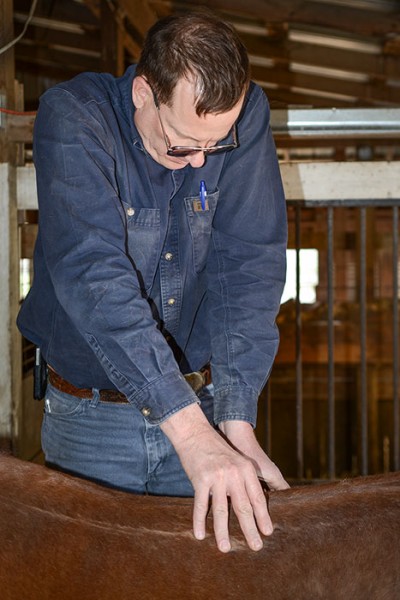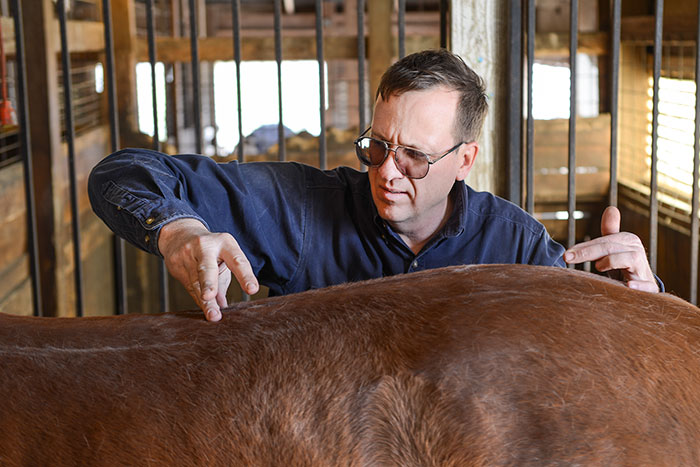What is Applied Kinesiology?
Applied Kinesiology (AK) is an interdisciplinary approach to health care by using key components of Chiropractic and Acupuncture therapies along with diagnostic tools of Applied Kinesiology to diagnosis and treat functional illness or neurologically controlled dysfunctions. AK is a diagnostic procedure composed of muscle testing to enhance a standard diagnosis. It does not replace other methods of diagnosis and should not be used alone. With the muscle testing method, it is a look into the function of the nervous pathways. Since the body’s function is controlled by the nervous system any enhancement or correction to the nervous system will increase the probability of a balanced health.
How does Applied Kinesiology work?
 To have a general understanding of the concept, we need to discuss normal muscle and nerve function. Normal baseline strength of the muscle is determined by two components: the amount of muscle protein and the nervous impulse to the muscle. Muscle strength is determined by the amount of muscle proteins the muscle is composed of. This is the muscle at 100% strength, which can be improved over time by building more muscle with proper nutrition and physical exercise. When evaluating the muscle, the strength of the muscle is dictated by the neuro-impulse to the muscle. If the neuro-impulse is 100% the muscle strength is 100%. The neuro-impulse is determined by all inhibitory and excitatory nerves that innervate on the muscle nerve. Inhibitory and excitatory nerves are the muscle’s pre-synaptic pool. The pre-synaptic pool can be influenced by all the functions occurring in the body. When the pre-synaptic pool decreases, this leads the firing of the muscle nerve to be decreased and consequently the muscle strength diminishes as well. When we do muscle testing we are looking for a weak muscle. Diagnostic techniques are then used to try to determine what is decreasing the pre-synaptic pool. With these findings we can formulate a treatment plan using manipulation or type of acupuncture stimulation.
To have a general understanding of the concept, we need to discuss normal muscle and nerve function. Normal baseline strength of the muscle is determined by two components: the amount of muscle protein and the nervous impulse to the muscle. Muscle strength is determined by the amount of muscle proteins the muscle is composed of. This is the muscle at 100% strength, which can be improved over time by building more muscle with proper nutrition and physical exercise. When evaluating the muscle, the strength of the muscle is dictated by the neuro-impulse to the muscle. If the neuro-impulse is 100% the muscle strength is 100%. The neuro-impulse is determined by all inhibitory and excitatory nerves that innervate on the muscle nerve. Inhibitory and excitatory nerves are the muscle’s pre-synaptic pool. The pre-synaptic pool can be influenced by all the functions occurring in the body. When the pre-synaptic pool decreases, this leads the firing of the muscle nerve to be decreased and consequently the muscle strength diminishes as well. When we do muscle testing we are looking for a weak muscle. Diagnostic techniques are then used to try to determine what is decreasing the pre-synaptic pool. With these findings we can formulate a treatment plan using manipulation or type of acupuncture stimulation.
What is the advantage of Applied Kinesiology?
While chiropractic care is beneficial to the correction of the nervous system with spinal manipulation, the use of AK is much more specific and accurate. For example when chiropractic is used alone it is like shooting a shotgun at the nervous system. You may hit the target which is the nervous system and gain some points but not hit the bulls-eye which is the specific problem. By adding AK into the diagnostic capabilities, you will hit bulls-eyes to get the maximum effect of a treatment. Another advantage of AK is finding abnormal Central Pattern Generators, called CPGs, can be identified. Knowing what a CPG is allows us to understand how AK enhances treatment. A CPG is a hardwired and learned reflex pattern in the spinal cord. If you were a guitarist learning to play an up-tempo song, you would play it slowly while you learned how to move your fingers to produce the music. However once the pattern was learned, you don’t think about it after initiating the pattern. This occurs because the muscle movement is faster then the amount of time it takes for the nerve impulse to come from the brain cortex. The same is true of a horse running down the stretch on a racetrack. Nerve conductivity is slower going the distance from foot to brain and back to produce the next step than the time it takes for that pattern to actually occur. The CPG is an orchestrated reflex of muscle contraction, relaxation; ligament stabilization, tendon tension and joint capsule pull, to name a few functions.
Just like a symphony, if each instrument is properly tuned and plays at the proper times a beautiful song occurs. Yet if the timing of the instruments is off or out of tune the symphony sounds out of sync. Likewise, if the muscle of the gait pattern fire and relax at the proper time, the tension on bones is accounted for and the joints float in space, allowing the gait to look beautiful. If the CPG is not correct, abnormal muscle contraction occurs, producing abnormal bone tension and torsion along with creating instability of the joints. Consequently over time the horse is no longer able to compensate for the abnormal movement, he will develop bone bruising, fractures, strained or bowed tendons and arthritis. As you can see, identifying and correcting abnormal CPGs can have dramatic and large impacts on the longevity and function of you horses athletic capabilities.

